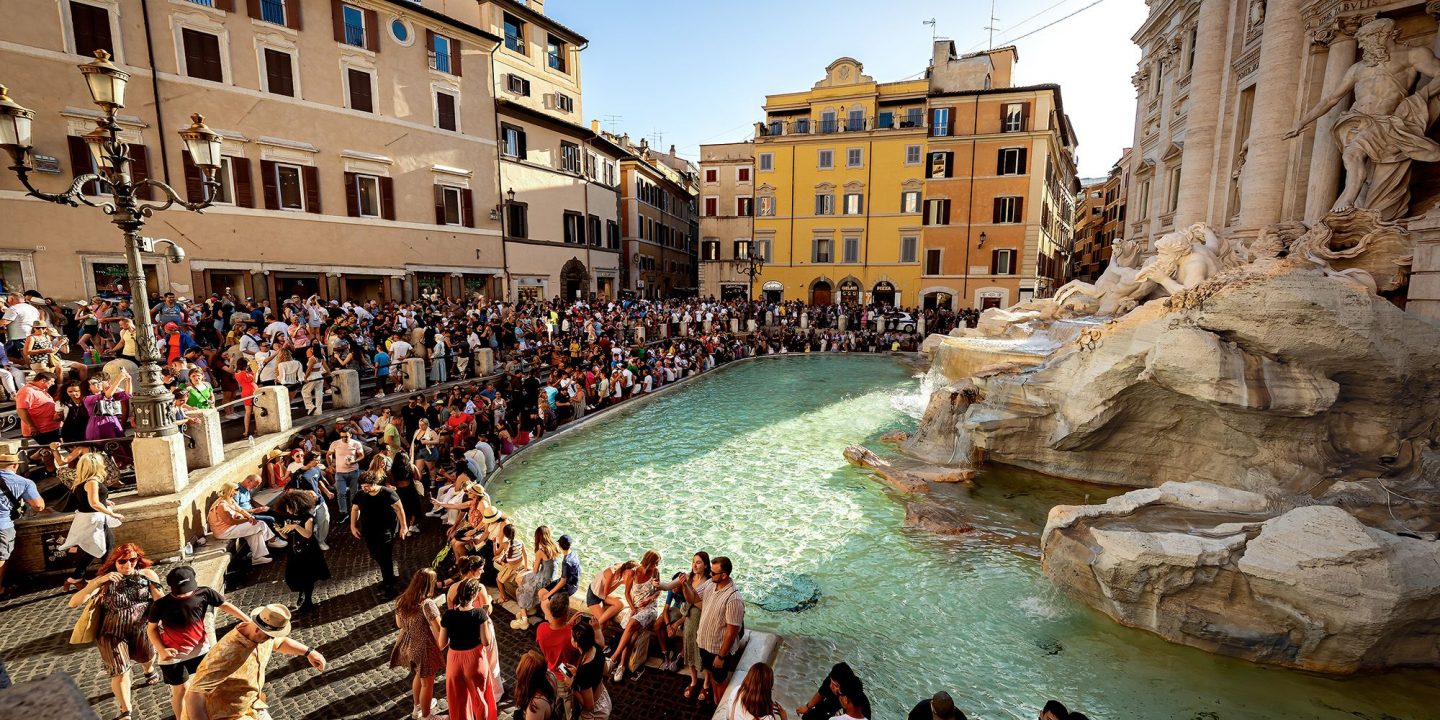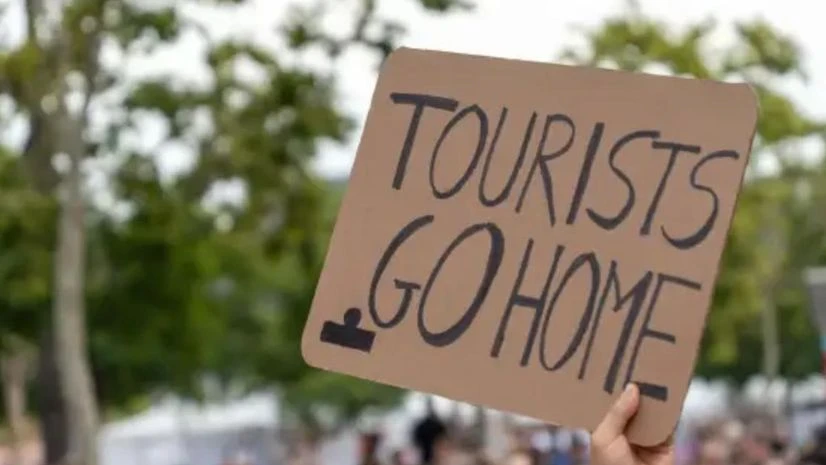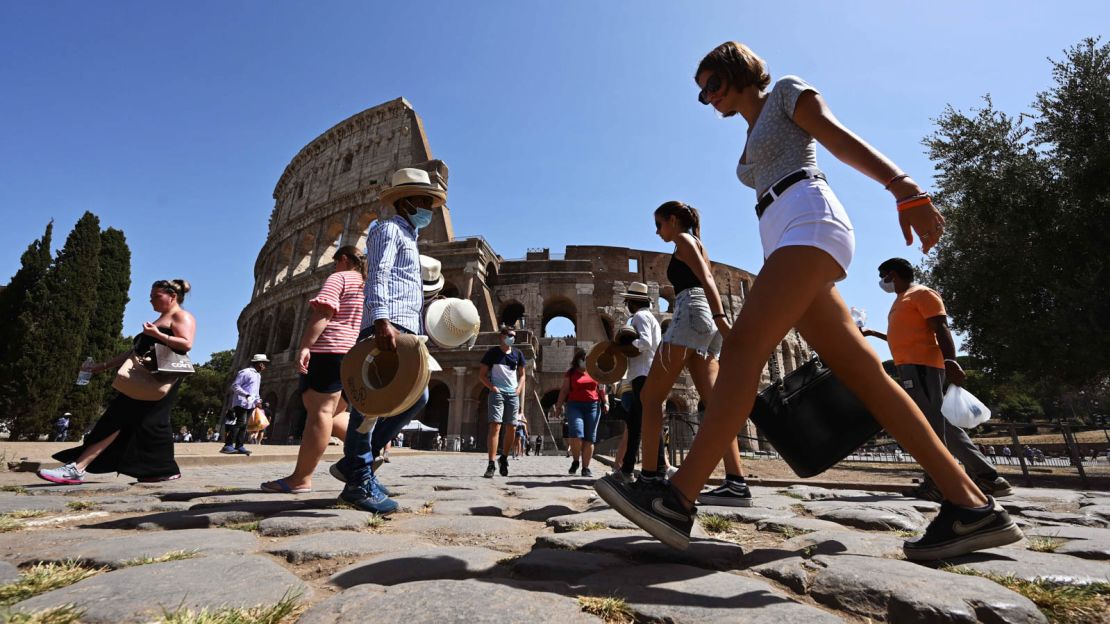
As cities worldwide grapple with the impacts of overtourism, Rome stands at the forefront of this debate. With record numbers of visitors flocking to the Eternal City, the balance between preserving local culture. And accommodating tourists has become increasingly precarious. We explore the rising tensions between residents and tourists in Rome. The broader question is for other cities and whether these changes will lead to a sustainable future.
The Burden of over-tourism
Rome has long been a magnet for tourists. However, the recent visitor surge has led to significant challenges for its residents. In 2023, the city welcomed 35 millión tourists, a number expected to rise further with the upcoming Catholic Church’s Jubilee. This could attract an additional 32 million pilgrims. This has resulted in overcrowded streets, prices, and a strain on local resources. This encourages many residents to voice their frustrations.
:focal(2000x1333:2001x1334)/https://tf-cmsv2-smithsonianmag-media.s3.amazonaws.com/filer_public/e5/08/e50818fe-cda5-4d61-8f0c-23d829a74a97/gettyimages-2154515960.jpg)
Local Voices Against Tourism
Anthony Majanlahti is a professor in Rome. It has described overtourism as a “plague,” and the city is losing its identity as it caters increasingly to tourists. Complaints range from the difficulty of crowded streets to the rising costs of living. It is in part by short-term rentals like Airbnbs that have transformed neighbourhoods into tourist hubs. The average rent in Rome has skyrocketed, making it nearly impossible for locals to find affordable housing.
)
The Response from Local Governments
In response to these challenges, cities like Rome are beginning to implement measures aimed at regulating tourism. The local government is considering charging a fee to visit iconic landmarks. This is a move that some residents view as a cash grab rather than a genuine solution to the problem. Other cities, like Venice, have already taken steps to limit tourist access, such as imposing entry fees and restricting the number of visitors during peak times.
A Shift in Attitude
This growing discontent is not unique to Rome. Cities across Europe, including Venice, Amsterdam, and Barcelona, are increasingly pushing back against mass tourism. Measures such as banning large cruise ships, limiting tourist buses, and even imposing fines for certain behaviours are becoming more common as local governments seek to reclaim their cities for residents. This shift indicates a broader recognition that while tourism is vital for local economies, it must be managed in a way that does not compromise the quality of life for residents.
Will It Change Anything?
The question remains: will these measures lead to meaningful change? While some residents hope that increased regulation will alleviate the pressures of over-tourism, others are sceptical. Critics argue that without a fundamental shift in how tourism is perceived and managed, these efforts may only serve as temporary fixes. The Italian Minister of Tourism, Daniela Santanchè, has emphasized the need for better management rather than a reduction in tourist numbers, suggesting that the focus should be on sustainable practices rather than limiting access.
The Future of Urban Tourism
As cities like Rome navigate this complex landscape, the future of urban tourism will likely depend on finding a balance between economic benefits and the preservation of local culture. Initiatives that promote lesser-known destinations and encourage off-peak travel could help distribute tourist traffic more evenly, reducing the burden on popular sites. However, achieving this balance will require cooperation between local governments, residents, and the tourism industry.

The tension between Rome’s citizens and the influx of tourists highlights a critical issue facing many urban centres today. As cities strive to protect their cultural heritage while accommodating visitors, the path forward will necessitate innovative solutions and a commitment to sustainable tourism practices. Whether these changes will be sufficient to restore harmony between residents and tourists remains to be seen, but the conversation is undoubtedly evolving.
Read more on Lifetips.blog














